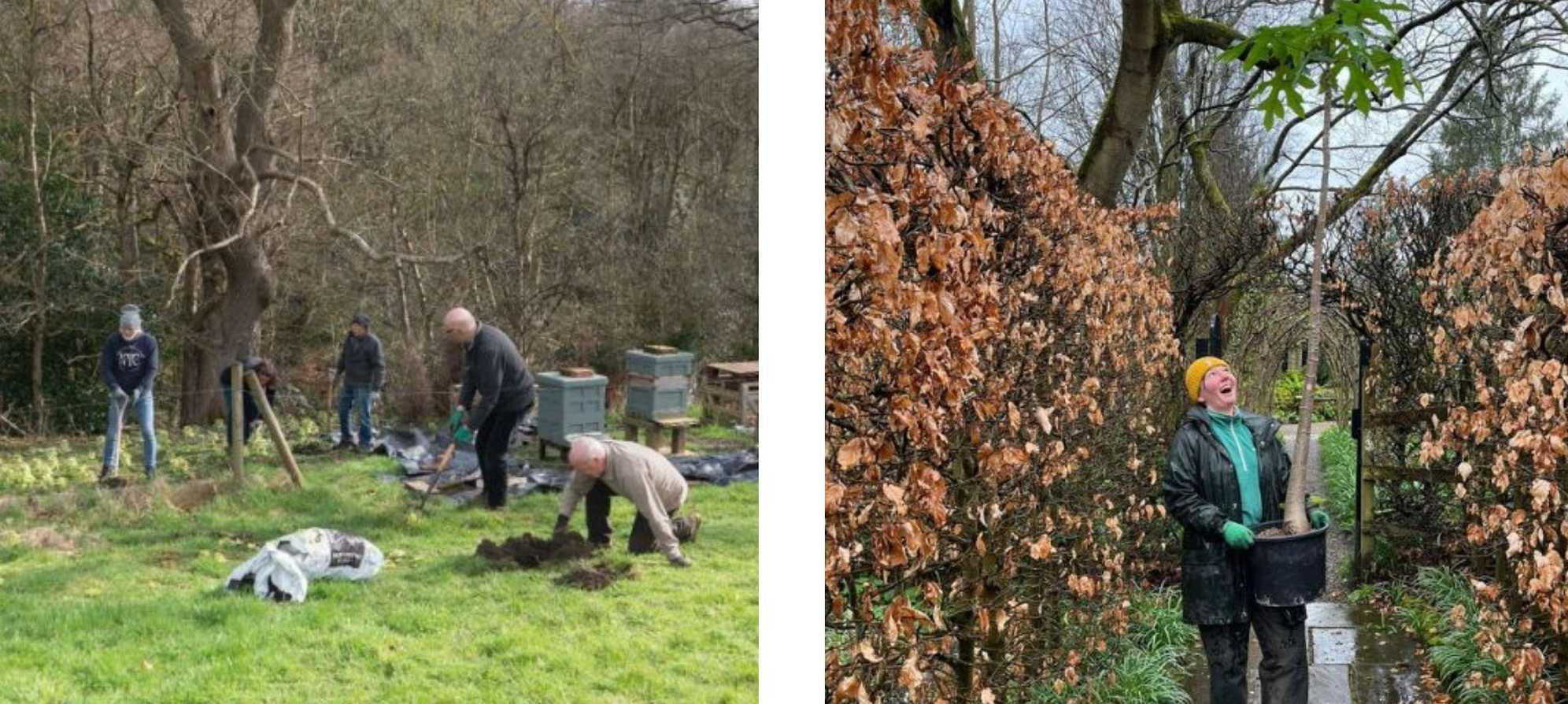Elusive orchids and deadly carrots
19 April 2024
4 min read

Obviously my usual column is about York Gate Garden and I will talk about the garden as well, but I have to mention my recent family holiday to the Algarve, Portugal.
We went at the end of March for a few reasons – my wife and kids have fair hair and burn at the slightest hint of sun; the price is much more reasonable at this time of year; and it’s not as busy. Something I had hoped for, but wasn’t a reason for the trip, was to see the odd Portuguese wildflower. I wasn’t expecting the wonderful geeky botanical experience I got!
I have to thank my beautiful wife and children for being so patient with me as I had to stop and photograph the ‘just weeds’ (my eldest son's words) on every street we walked down.
I was expecting coastal areas to be botanically interesting, which they definitely were, but I was not expecting the pavement cracks to be so amazingly diverse.
I absolutely love our native British flora, but it really shows how comparatively barren our country is compared with larger land masses.
My main aim on the trip was the hope of seeing a mirror orchid, Ophrys speculum, somewhere, so my long-suffering wife was left building sandcastles whilst I checked out the sand dunes behind the beach. I found loads of amazing plants, some that I could identify and others that will take some trailing through my books to work out (an absolute pleasure, never a chore) – but not the elusive mirror orchid. I did however find three other Ophrys species in the dunes: O. lutea, O. fusca and O. bombyliflora.
It wasn’t until I was checking out a small bit of scrappy waste ground that I found my first mirror orchid, and after that first find I started noticing them all over, even one individual growing in an overgrown cafe window box.
In hindsight it does sort of make sense. Our native bee orchid, Ophrys apifera, is happiest growing in the poorest of soils such as dry chalky grasslands or even slag heaps.
The sand dunes had some amazing plants that I didn’t know but would love to try and source now I am home. This trip has given me loads of ideas for plants for our sand garden at York Gate. A particular favourite was the fantastically named villous deadly carrot, Thapsia villosa (villous meaning hairy, referring to the basal leaves). As the name suggests, this plant is in Apiaceae (the carrot family) and it can reportedly grow to nearly two metres; the plants I found were only roughly a metre but absolutely gorgeous. When you think of the carrot family you picture flat umbels of flowers, but the deadly carrot has almost round flower heads like a giant yellow allium.
I have taken so many pictures of plants on this holiday that I reckon I have enough for another talk. I do talks for gardening groups, normally on York Gate, but now I can add Wild Algarve to the list.
I will mention a few more Portuguese plants next month.
Whilst I have been away, the team at York Gate have been busy preparing the garden ready to welcome visitors for the season – Tom has been bare-rooting plants for the sand garden, the volunteers have helped to keep the butterbur under control in the meadow, Amy has been providing essential maintenance by cleaning the canal, and everyone has been involved in moving plants out of the greenhouse for our pot displays.
As for your own garden, the weather is starting to change now so you can plant your summer bulbs and corms in the ground – lilies, gladioli etc.
Keep an eye out for those emerging weeds and get them out before they have a chance to flower.
It’s time to start cutting your lawns again. If it’s the first cut then cut it higher than normal so you don’t stress your grass out. Over the next few weeks you can gradually reduce the height back down to your desired height. If you don’t already do so, you could think about leaving a patch of lawn long to become a mini wildflower meadow. Even if it is just a metre wide, every little helps for wildlife.
York Gate is one of three gardens owned and managed by Perennial. Each of the gardens is unique; York Gate in West Yorkshire is inspired by the Arts & Crafts movement. Fullers Mill in Suffolk is an enchanting, quiet waterside oasis. The Laskett in Herefordshire is a creative memorial that celebrates the arts. Visit perennial.org.uk/gardens
These restorative green spaces have been generously gifted to us by special supporters. By sharing their most treasured places, we can tend to the UK’s horticulture industry.
When you visit, you’re not just enjoying the scenery, you’re part of a lifeline. Every admission, membership, shop or plant purchase, cup of tea or slice of cake helps us to build better futures for people in horticulture and their families.
Admission to the garden is £10 per person (£12.50 Gift Aid), or you can enjoy unlimited visits on public open days for you and a friend for just £35 per year. Visit perennial.org.uk/gardens for further information.

May meadows and spring showers
24 May 2024|5 min read
Everyone’s favourite topic of conversation seems to be the weather. I’m not going to break from the norm too much, so here goes.

Sand, stone and spring
22 Mar 2024|4 min read
When we built the new café at York Gate, we also created the sand garden. It is like the famous metal paint advert, it does what …






